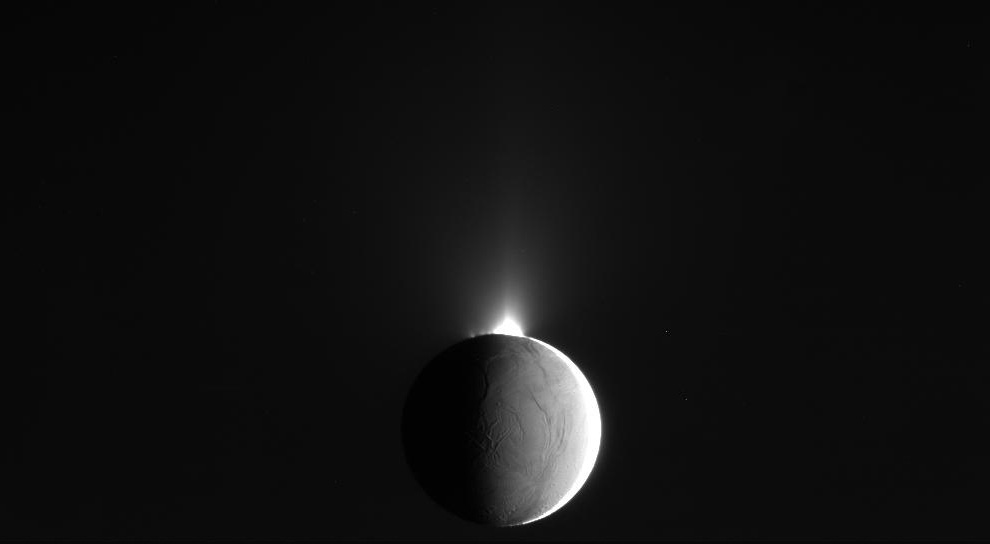 | |
|  |
|
|
view titles only (low bandwidth) |
| |
| In which I blame it on the tax man | Mar 31, 2015 10:52 PM PDT | url |
| | |
Added 1 new A* page:Here's a sketch I sent to a reader as their reward for supporting the comic through the A* Patreon campaign in the month of December:

An odd coincidence of tax preparation and social events has been taking up the time in which I should have been getting the February reward sketches done, but once tax day is past I should be able to start getting caught back up ; ). (Thanks to everyone who bought A* art from me last year, I had a small mountain of shipping receipts to add up! : )
|
·····
|
| |
| Super sneaky attack | Mar 30, 2015 11:43 PM PDT | url |
| | | |
Added 1 new A* page:Our armored friend didn't see the round little object Selenis dropped two panels ago rolling up to his feet in the previous page. Did youuuu? (I didn't really mean for it to be as hard to spot as it probably was!)
|
·····
|
| |
| Nothing to see here | Mar 28, 2015 3:18 AM PDT | url |
| | | |
Added 1 new A* page:Whew okay that's the week done, should manage some better blogging next week! See you then!
|
·····
|
| |
| Purple Mud | Mar 27, 2015 3:44 AM PDT | url |
| | |
Added 1 new A* page:Ooh an unsolicited email from a 3rd-party site optimization bot suckered me into tidying a few old files up, which led me into tidying up some obscure old scripting issues, and here we are super-later than ever. Will I get a page done tomorrow? Come back and find out! : o
(The obscure stuff was like the first 29 or so news posts I ever made here weren't properly searchable anymore because they were stored in an older, slightly different format, and uhh oh yeah I had an old thingy that let me set a custom color for hyperlinks in news posts, but I haven't needed those to be different from the page default for ages now, so it was just there kind of wasting cycles and bandwidth, in its own extremely minor way, but now it's deleted entirely, so we can all breathe easier knowing no redundant font coloring is happening. Or less, anyway. Whew! : p)
(Speaking in hushed tones as we are of redundant coloring, I felt like there was maybe a little of that going on in today's A* page—I seem to be gradually learning to get the watercolors darker and more saturated, which certain has its uses, but then the danger there is going a little overboard now and then and getting kind of thick and muddy. Oh well, can't have progress without kicking up some mud here and there, right? Mm, mud. Purply mud.)
|
·····
|
| |
| I should just stop using clocks probably | Mar 26, 2015 2:03 AM PDT | url |
| | | |
Added 1 new A* page:Still running late, boy the blog is suffering this week. Maybe I'll do better next week. : o But the comic pages must go on!
|
·····
|
| |
| Late late late | Mar 25, 2015 1:28 AM PDT | url |
| | | |
Added 1 new A* page:Bah, too late, I'm straight off to bed!
|
·····
|
| |
| You Can Never Really Have Too Much Tape | Mar 24, 2015 1:21 AM PDT | url |
| | | |
Added 1 new A* page:A reader who won the auction for the original painting behind a recent page (it was episode 25, page 15) came up with a creative way of displaying it while they hunt up a frame, as you can see on their tumblr. I like it! (And yeah my packing of art when I mail it off to people generally involves a lot of paper straps and tape ^_^).
|
·····
|
| |
| Let's have another sketch! | Mar 21, 2015 3:18 AM PDT | url |
| | |
Added 1 new A* page:Here's a sketch I sent off to a reader a little while back as their reward for supporting the comic through the A* Patreon campaign in the month of December:

~~~~~~~
I temporarily removed the little blue Top Web Comics voting widget from below the right side of the comic, since their site is currently down while they're moving servers; I'll get it back up there once they're back up and running. Thank you very much to everyone who's been there voting for A*!
EDIT: Top Web Comics is back : )
|
·····
|
| |
| But they're good for the boo-boos | Mar 19, 2015 10:46 PM PDT | url |
| | | |
Added 1 new A* page:Well it's late and I'm going to bed so I can get up and get tomorrow's page done in a somewhat timely fashion! Also I may have to figure out what kind of present to take to a 4-year-old's rollerskating birthday party. ... I'm thinking band-aids but I suppose some would find that too practical. : PP (Maybe I'll just take some for me! : o)
|
·····
|
| |
| Down an 8-bit-ish rabbit hole | Mar 18, 2015 10:32 PM PDT | url |
| | |
Added 1 new A* page:I'm gradually starting to realize just how much this scene is going to be a combination of couple scenes from "The Matrix." I may have spent a little too long in Matrix-land. ; )
Speaking of dangerous digital worlds, I got sucked into one of those "free to play" mobile app games today! :"o See, back in the early days of the web, someone pointed me to this fun little Flash-based puzzle game; that was so early that web content providers often didn't really "secure" their stuff, so a little poking around and I was able to download the game's Flash file to my own computer, where I could play it or upload it to my own server or whatever. Ah, those innocent days! So I played that on and off for a while, until eventually versions of the same little puzzle game came out on the Game Boy Advance and PS2—they were flashier and had more whistles and bells, so I went and played those. They were slightly less convenient to play, I suppose, and I eventually didn't play the game much at all...until a good friend gave me a hand-me-down smartphone, and I found that the game now had a mobile "app" version! It didn't run too well on that phone, but eventually I got myself a somewhat newer phone, and that ran it pretty well! And it had been made back in those early halcyon days of the mobile gaming scene were developers were innocent enough to put out their game for a couple bucks, and then you could just play it to your heart's content without having to worry about it ever costing you any more money, until the end of time.
Flash forward to now, and there's a new, flashier, multiplayer version of the game in "free" app form: "free" means that you download it, and for a while it showers you in gold and riches and pixelated colors and smiles, and loves you so much! And it gives you a bunch of presents you can use to make your own little sort of house in the game and decorate it and populate it with fun animals and followers and even have them go on quests even though none of this really has anything to do with playing the game itself. Then you use up the last of the free credit juice they supplied you with when you first signed up, and you're left waiting fifteen minutes for a new "credit" to arrive to let you play the little game again, so you can earn a few more points to save up to raise one of your little house's decorations one level, if you're lucky, and while waiting and practicing in the old version you think about how the various random power-ups and optional purchased items mean the new game isn't exactly about how good you are at playing the game anymore (not that I'm anything special at it, mind you!), and you realize that you don't play these games—they play you!
So yeah I uninstalled it; back to the simple old crusty version for me. Whew! : P
|
·····
|
| |
| Solar system lousy with subsurface oceans | Mar 17, 2015 10:32 PM PDT | url |
| | |
Added 1 new A* page:You'll recall that in episode 23, Selenis traveled to a planetoid where a fairly thin layer of ice covered a subsurface ocean. This was inspired by evidence pointing to the possible existence of oceans under thick ice layers on a number of the moons in our solar system!
Saturn's moon Enceladus is famous for its spectacular geysers shooting water ice crystals into space, photographed as far back as 2005 by the Cassini probe:

Cassini found that the ejected ice particles contain salt, pointing specifically to a salty subsurface ocean.
Last April, scientists reported an anomaly in the effect of Enceladus' gravity on Cassini's motion in the passes it has made near the moon, specifically past the south polar region, where geysers emerge from four "tiger stripe" gashes in the icy crust; a large depression covers the south polar region, which should weaken the gravitational effect felt by the probe as it flies past, but the effect was not as pronounced as expected, and the scale of the difference from the expected reading could be accounted for by the existence of something under the ice, denser than ice, though not as dense as rock—and water fits that bill: calculations "suggest a large, possibly regional, ocean about 6 miles (10 kilometers) deep, beneath an ice shell about 19 to 25 miles (30 to 40 kilometers) thick." Cassini is due to make more passes over Enceladus later this year.
NASA has also been allocating funds to study the possibility of a subsurface ocean beneath the crust of Jupiter's moon Europa. "The first hints of a subsurface ocean came from theoretical considerations of tidal heating (a consequence of Europa's slightly eccentric orbit and orbital resonance with the other Galilean moons)." Photos of the moon taken by the Voyager and Galileo probes showed terrain features that suggested upheavals from beneath the surface, where new ice formed in surface areas perhaps torn or melted apart, which could be consistent with tidal movements of an ocean beneath the ice. Mathematical models based on the theoretical heating and observed surface features "predicted that the outer crust of solid ice is approximately 10–30 km (6–19 mi) thick, including a ductile "warm ice" layer, which could mean that the liquid ocean underneath may be about 100 km (60 mi) deep"; "this leads to a volume of Europa's oceans of 3 × 10^18 cubic meters, slightly more than two times the volume of Earth's oceans." Furthermore, Galileo, which orbited Jupiter from 1995 to 2003, found that Europa responded less than expected to the force of Jupiter's powerful magnetic field, which could be accounted for by "a highly electrically conductive material in Europa's interior" that would intercept Jupiter's field and conduct it around rather than through the rest of the interior; "the most plausible candidate for this role is a large subsurface ocean of liquid saltwater."
In December 2013, the Hubble Space Telescope detected water vapor above Europa's south polar region, strongly suggesting the presence of water geysers roughly equivalent to those on Enceladus. Then, last September, scientists studying Europa's surface features announced that they'd discovered evidence for subduction—that is, for shelves of ice being shoved down below the surface by collisions with nearby ice plates, similar to plate tectonics on Earth. This kind of movement could be facilitated by a subsurface ocean of the type suggested by the earlier evidence.
Jupiter's largest moon, Ganymede, has been considered a candidate for a subsurface ocean ever since such a feature was suggested by scientific models of the moon's composition calculated in the 1970s. And the Galileo spacecraft, as it had found with Europa, noticed a weaker than expected response to Jupiter's magnetic influence, again suggesting a conducting subsurface ocean (Galileo had a similar finding for another of Jupiter's moons, Callisto).
And just a few days ago, news emerged of Hubble data providing the "best evidence" yet for the existence of a subsurface ocean on Ganymede: aurorae at Ganymede's poles—ultraviolet light emitted by high energy particles caught in the interplay of magnetic fields between the moon and Jupiter—would normally be rocking back and forth by six degrees as the moon orbits the planet, but Hubble, watching them, observed a mere two degrees of movement in Ganymede's aurorae, and what could account for that difference would be a lunar subsurface ocean no deeper than 330 km: "The data are consistent with an ocean of a 100km thickness with a certain salt content of about 5g per one litre of water. But it could equally well be an ocean of only 10km but with 10 times more salt."
Those are the moons with the best evidence for subsurface oceans—but there's more! That last news article lists more suspects in what could be a very "soggy" solar system:
- Estimates of the dwarf planet Pluto's density based on Hubble observations suggest a large water ice content, and the "decay of radioactive elements" below the surface could melt that ice, "creating a subsurface ocean layer of liquid water some 100 to 180 km thick at the core–mantle boundary."
- In 2014, the Herschel Space Telescope observed water ice around the dwarf planet Ceres; models of the dwarf based its observed size and orbit again suggest a significant water ice density presence; "also, some characteristics of its surface and history (such as its distance from the Sun, which weakened solar radiation enough to allow some fairly low-freezing-point components to be incorporated during its formation), point to the presence of volatile materials in the interior of Ceres"; "it has been suggested that a remnant layer of liquid water may have survived to the present under a layer of ice." The Dawn spacecraft, just arrived around Ceres, has observed "soft" surface features, suggesting a possible water ice composition.
- Based on density calculations, Saturn's largest moon, Titan, is thought to be 50% water ice. If its interior is still warm, a water/ammonia "magma" could remain liquid even at very low temperatures. The Cassini spacecraft has detected "natural extremely-low-frequency radio waves in Titan's atmosphere"; "Titan's surface is thought to be a poor reflector of extremely-low-frequency radio waves, so they may instead be reflecting off the liquid–ice boundary of a subsurface ocean." And gravity and visual observations by Cassini suggest that Titan's crust and core are moving independently, which would require a liquid layer of some sort separating the two.
- One explanation for the larger than expected wobble, reported this past October, observed by Cassini in Saturnian moon Mimas' orbit is a subsurface ocean, 15 to 20 miles beneath the surface. Mimas has been measured with a very low density suggesting a primarily water ice composition, but it is so small that while some theories say a more elongated ancient orbit could have produced enough tidal heating to melt the ice and form a subsurface ocean, others say that any such ocean would have refrozen long ago.
- Chemical and density calculations suggest a 30-45% water ice composition for Neptune's moon, Triton; water ice covers about 15-35% of its surface. "There is enough rock in Triton's interior for radioactive decay to power convection in the mantle. The heat may even be sufficient to maintain a subterranean ocean similar to that which is hypothesized to exist underneath the surface of Europa."
Whoa, that turned out to be way more subsurface oceans than I'd bargained for when I started writing this! : o
|
·····
|
| |
| Kind of getting caught up on these sketches | Mar 16, 2015 11:20 PM PDT | url |
| | |
Added 1 new A* page:Here's a sketch I mailed off a while back to a reader as their reward for supporting the comic through the A* Patreon campaign in the month of December:

Thank youuuuu!
|
·····
|
| |
| Ever notice how pictures stare at you | Mar 14, 2015 7:54 AM PDT | url |
| | |
Added 1 new A* page:Here's a sketch I sent to a reader a ways back as their reward for supporting the comic through the A* Patreon campaign in December:

Severe haircuts and expressions posed in windows in front of severe landscapes, hey!
|
·····
|
| |
| Scientists hope comet lander close to waking | Mar 13, 2015 4:28 AM PDT | url |
| | |
Added 1 new A* page:When the ESA's Philae probe landed on comet 67P/Churyumov-Gerasimenko, it kicked up a cloud of dust from the comet's surface, and, even though it landed in a deep shadow where it quickly lost power since its solar cells could collect no sunlight, it managed to fire up its oven, heat the debris it had collected, and analyze the gasses given off (BBC). At the end of November, "the team leader, Prof Ian Wright, told BBC News: 'We can say with absolute certainty that we saw a very large signal of what are basically organic (carbon) compounds. There is a rich signal there. It is not simple. It is not like there are two compounds; there are clearly a lot of things there - a lot of peaks. Sometimes a complicated compound can give a lot of peaks.'" The potential find of complex organic compounds is in line with the theory that it was comets that brought the building blocks of life to Earth.
After that tantalizing preliminary analysis, Philae ran out of power and went to sleep. Now, with the comet gradually approaching the Sun, Philae is receiving twice as much solar power as it was when it landed, and it might have enough power to wake up (Wired); mission controllers have managed to get its mother ship, Rosetta, aligned over the lander in its orbit of the comet, so they can communicate—if Philae has enough power. "Today, for the first time since it started napping, mission engineers have begun trying to communicate with Philae." The lander "is only getting 1.3 hours of sunlight for each 12.4-hour day on the comet. For the lander to wake up, its solar panels have to be turning those meager hours of sunlight into 5.5 watts of power. And to send and receive signals from Rosetta, it needs 19 watts. Philae also has to be warmer than -49˚F to work." The lander's science team doesn't think it's getting that—yet (it might even be as cold as -150˚F, in shadow). They'll be sending it signals, though, in the hopes that it may get enough light to at least do a little work in its daylight hours, even if its battery is still too cold to start charging. As Rosetta's orbit changes, windows of opportunity for this communication with the lander—whose exact position on the comet is still unknown—will come and go a handful of times between now and August 13th, when the comet hits its closest approach to the Sun; if they haven't heard from it by then, it's probably the end.
|
·····
|
| |
| The Sibilant Sounds of Silence | Mar 12, 2015 3:44 AM PDT | url |
| | | |
Added 1 new A* page:Okay because it's super-late again and I don't want to take the time it would take to blog about something I have to look up, I'll jabber about myself again! Have I mentioned that for the past x months I've been drawing A* while wearing earplugs? I don't think I have! I started doing that because...hm well I think what finally drove me to it was persistent window-open recorder lessons undertaken by someone in the apartment building across the way. There's also that dog in that third-floor apartment across the other way that barks all day (and sometimes night) long through the window its absentee owner obligingly leaves open. And kids at recess at the school across the street, people stomping through the hallway, helicopters buzzing overhead especially in summer, etc etc, hello modern life! So anyway I was having trouble sitting down and drawing one day and I figured it couldn't hurt to block some of those things out so in went the ear plugs and then it seemed to me the drawing went a little better than it had been going, so I stuck to it! Some days I think gosh this will be dull with the sensory deprivation and all but once I get going I really seem to get focused in on the drawing, so, I think it helps. (And I *used* to listen to music while drawing, and back then the outside noises didn't bother me so much, but then I decided the music was distracting. ; )
|
·····
|
| |
| Things not to do with your work day | Mar 11, 2015 3:35 AM PDT | url |
| | |
Added 1 new A* page:True confessions time! Professional that I am, I wasted way too much time today a) swapping arcade hardware between joysticks and b) finding and sort of working around a tragic new incompatibility between my antivirus program and my ancient version of Windows.
... Hopefully I won't be doing either of those things again for many years to come. Although I am proud of myself for finding out that the old thingy wouldn't connect to the new thingy because I needed some particular nuts and screws (thank you, Google cache of old discussion boards), and then actually going to the hardware store and finding them (okay I pestered the awfully patient and helpful staff until they found them for me). And they worked! And I'm not what you'd call a handy person! So gosh. 10 mm-long 3M hex bolts with 0.5 mm pitch, yeah.
|
·····
|
| |
| Twisting more data into light beams | Mar 09, 2015 10:41 PM PDT | url |
| | | |
Added 1 new A* page:'Twisted light' beamed across Vienna (BBC) is an article from last November about an experiment in which scientists successfully transmitted information 3 km through the air on a beam of "twisted" light: by shining a green laser through a special LCD display, they were able to impart specific spiral orbits to its photons, and these photons, with their "superposition of two angular momentums, which go in opposite directions," were able to have their particular configuration decoded after striking the target detector across town. The reason why this is a potentially very useful proof of concept is that by applying different degrees of "twist" to its photons, each "twist" becomes a separate "channel" of information in the beam, so you can pack far more information into light transmitted in this fashion than you can with standard optical relays.
|
·····
|
| |
| Are they still sunglasses at alien stars? | Mar 07, 2015 2:54 AM PST | url |
| | |
Added 1 new A* page:Coincidentally, here's a sketch of Selenis sporting big sunglasses ("starglasses?") that I drew and sent to a reader some weeks back as their reward for supporting the comic in the month of December through the A* Patreon campaign:

This is probably because I grew up in the '80s but who knows.
~~~~~~~~
Speaking of Patreon rewards, over the weekend I'll be emailing out download links for the recently completed episode 24 e-book to those folks helping out through Patreon at the e-book reward levels. : ) If you don't happen to be one of those people, you can always purchase it through the episodes and e-books page.
~~~~~~~~
NASA's Dawn spacecraft became our species' first spacecraft ever to visit a dwarf planet when it went into orbit around Ceres (BBC)—the largest object in the asteroid belt between Mars and Jupiter—this morning! "Over the next month, controllers will re-shape the orbit to get it ready to begin the prime science phase in late April."
|
·····
|
| |
| People vs Shiny Space Ships | Mar 06, 2015 12:12 AM PST | url |
| | | |
Added 1 new A* page:Tomorrow's page should actually have people in it, if I get it done in time! : o
|
·····
|
| |
| ROM, G.I. Joe, and even older Marvel comics | Mar 04, 2015 11:37 PM PST | url |
| | |
Added 1 new A* page:I don't have a real blog entry today because I was distracted by the internet (again), particularly by A Brief History of 'ROM: Spaceknight' in Marvel Comics; I thought I already knew more than I wanted to about ROM, that kooky '80s armored alien hero guy based on a really clunky late '70s electronic robot toy, since my brother was collecting the later part of the original comic series as it was coming out back in the day, but this article has some details I didn't know about, like how ROM once stole a ship from the Fantastic Four to fly back to his home planet, and that he once fought Power Man & Iron Fist. Neat.
I was also surprised by the article's mention of Marvel's "G.I. Joe" licensed comic having originally been a pitch by writer Larry Hama for a series based on Marvel's "Nick Fury" super-spy character—but in retrospect it's so obvious that the Joe enemy organization "Cobra" was repurposed from the old Marvel baddie group "Hydra." Gosh!
In other old comics news that nobody should care about, I am currently on a mission to read all the comics on Marvel's Marvel Unlimited service (read all the digitized 6-months-or-older Marvel comics you can for like $5 a month), chronologically—at least up through the '80s : p. They start in 1939, and after a month or two I'm up to 195...2? But that's only because there's a gap from about '45 to '51. : P Which is probably good because most of those early Marvel (Timely) Golden Age comics were pretty rough. : o
|
·····
|
| |
| The plain stuff is the hard stuff? | Mar 03, 2015 10:48 PM PST | url |
| | |
Added 1 new A* page:I always get a bit nervous when drawing a page that doesn't have Selenis in it. : o So I figured I might as well just take the opportunity of today's no-Selenis page to experiment a bit, and not too surprisingly I suppose I ended up laying the watercolor and white ink on pretty thick. Although one thing with that is that you can then wash/scrape some of it off and get sort of neat faded looks, like the shaded area on Thierry's shoulder there. In the end I struggled to paint the tiny-person-in-the-middle layout I gave myself in a way that would be striking; it was supposed to be a calm, subdued panel, but I seem to get antsy trying to paint such understated things. : P
Tomorrow's page won't have Selenis *or* Thierry in it! Or any visible person, for that matter. Hm what to do, what to do...
|
·····
|
| |
| Ions will get you there eventually | Mar 02, 2015 11:41 PM PST | url |
| | |
Added 1 new A* page:SpaceX launches electric satellites is a BBC article covering today's launch of two commercial satellites by the space flight company SpaceX, and it makes a point of discussing the fact that these satellites use electrically boosted xenon ions for propulsion, rather than conventional gas-burning thrusters. Such ion drives have been more and more popular with European and Asian space vehicles in recent years, for instance there was the Japanese Hayabusa probe that returned material from asteroid 25143 Itokawa in 2010, and the European SMART-1 satellite that used an ion thruster to reach the Moon in 2004. As the BBC article puts it,
| The efficiency of electric thrusters does away with the bulky fuel tanks required by traditional chemical engines. [...] The downside is that it takes longer for a spacecraft to get into position once it is dropped off in orbit - on the order of months rather than weeks. |
It appears that the first working ion thruster was built by NASA in 1959. NASA conducted successful test missions of ion engines in 1964 and 1970 (SERT I and II), but it was the Soviet Union who really ran with the technology, using hundreds of ion engines on satellites from the '70s through the '90s. NASA has run successful tests of ion drives running steadily for years on end; in one such test, the engine was 12 times more efficient than an conventional chemical thruster would have been, per kilogram of propellant. NASA's first spacecraft to use an ion drive was 1998's Deep Space 1, which made a flyby of asteroid 9969 Braille and Comet Borrelly. The US military and Boeing have used ion thrusters in their satellite projects, and let's not leave out NASA's Dawn probe, currently closing in on the dwarf planet Ceres with its ion drive.
|
·····
|
|
|
